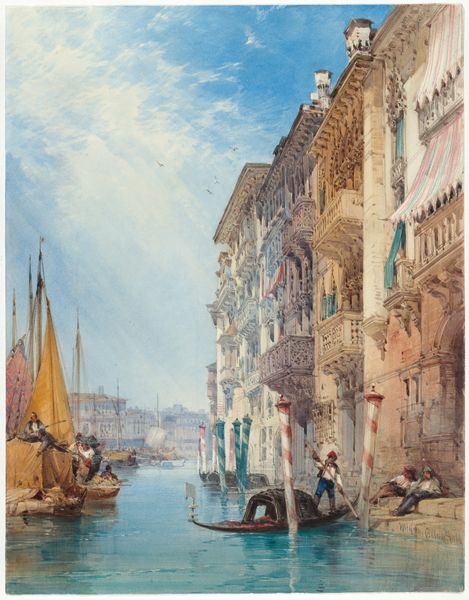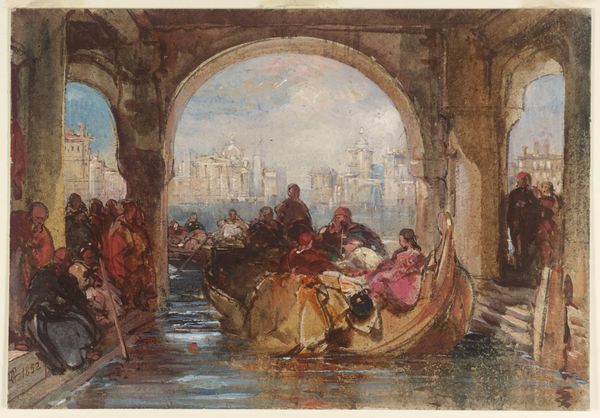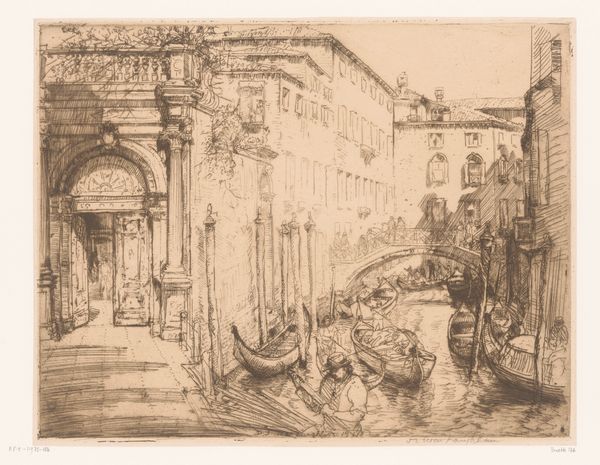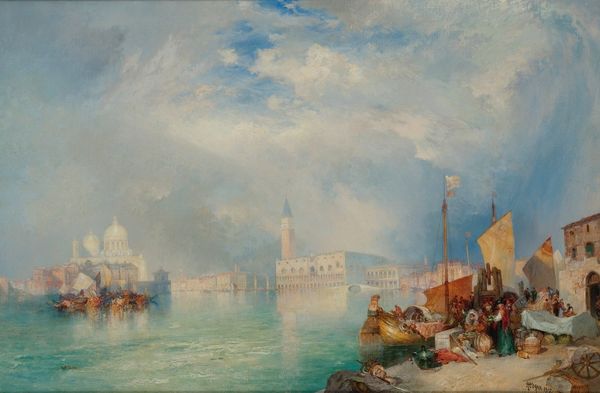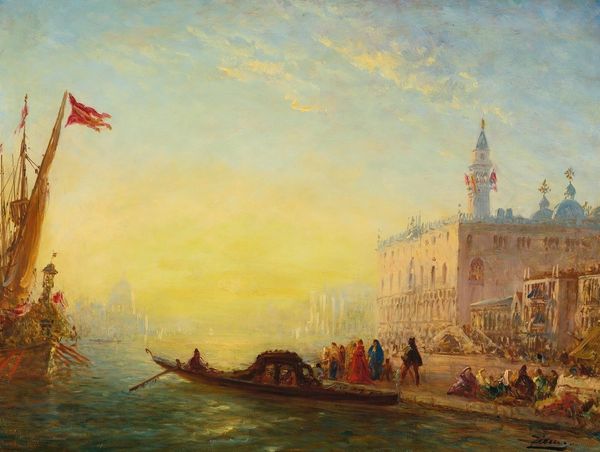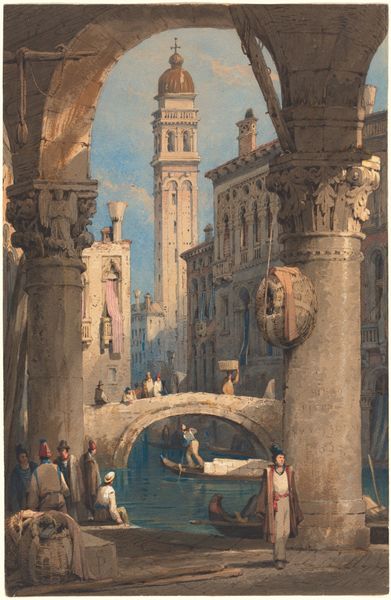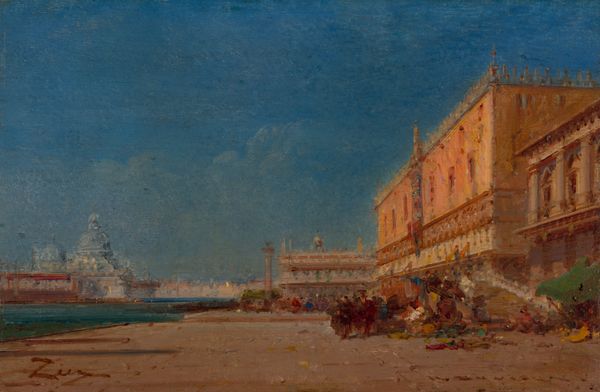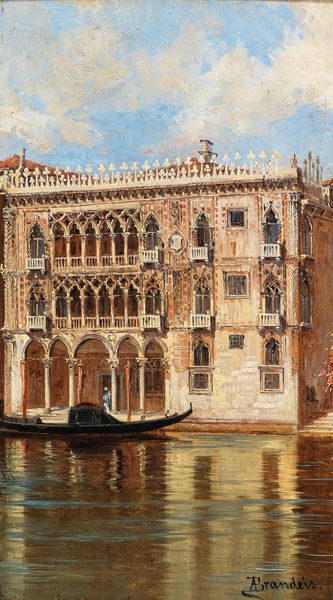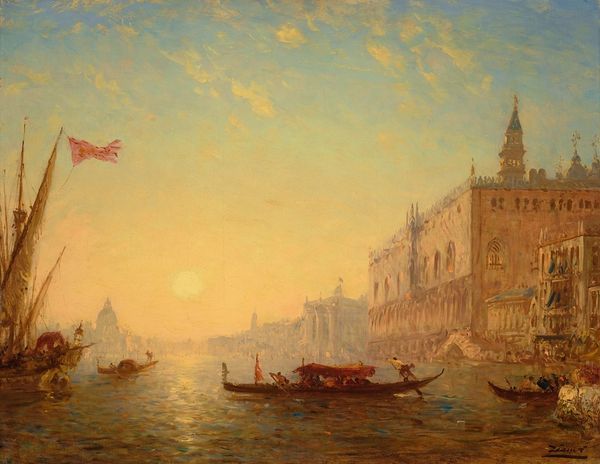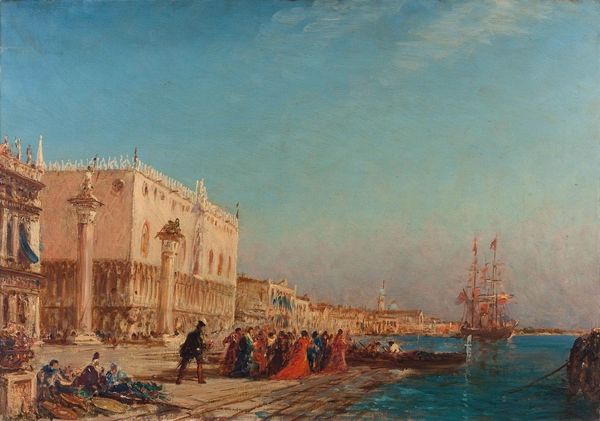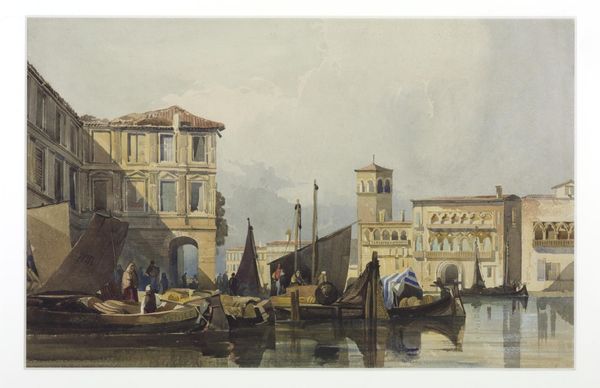
Dimensions: 11 3/8 x 22 3/8 in. (28.9 x 56.8 cm)
Copyright: Public Domain
James Holland made this watercolor painting called 'The Orange Market, Venice' sometime in the mid-19th century. It captures the commercial bustle of the city and, in doing so, gives us an insight into its social fabric. Consider the visual codes Holland employs: the faded grandeur of the architecture, the tightly packed boats, and the busy figures trading goods. This is Venice as a working city, not merely a picturesque view for tourists. Holland was British and like many artists from Northern Europe, he was fascinated by Venice’s unique geography and history as a mercantile power. He understood that it was the lagoon that had enabled its cultural and economic development. But Holland’s Venice is not just a romantic idyll. There is a sense of the everyday, the grind of commerce, and the interactions between people of different social classes. To truly understand this work, we can research the history of Venetian trade, its complex class structure, and the role of the city as a meeting point between East and West. Holland’s art is a reminder that all art is made in a specific social and institutional context.
Comments
No comments
Be the first to comment and join the conversation on the ultimate creative platform.
